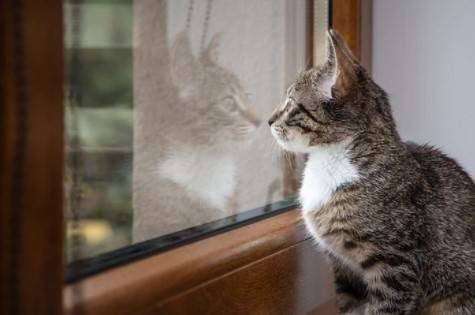One big issue for many pets newly arrived to Hong Kong is learning to deal with a different living arrangement. Many of us came from a house with a yard, and sometimes there’s a learning curve for dogs and cats getting used to new rules and toilet situations.
Nervous or anxious cats or dogs can really benefit from a pheromone diffuser. Pheromone diffuser can really help a pet adjust and stay calm and contented while they’re settling in. They release an odourless pheromone that has no smell or effect on people, but work as a natural signal to the dog or cat that their environment is safe and they can relax. These diffusers are not drugs or sedatives, just a natural pheromone. They are extremely effective in tackling any anxiety.
There are different approaches depending on if you have a dog or a cat and some of our techniques are outlined below.

Dogs
For dogs, my best advice is choose your apartment carefully and plan what you would like to happen before you move in. Make sure the building management allows pets in the building (many don't). Make sure there is easy access to suitable toilet locations and easily accessible places to walk your dog. Have a think about whether you would like your dog to toilet on a 'pee pad' in the house - many people with smaller breed dogs decide that this is a good option, and choose where you would locate the 'pee-pad'. A lot of people choose the balcony or laundry room. Once you choose your location, as much as possible stick to it - dogs will get confused if the location changes and may toilet in the wrong place.
Once you get settled, take your dog out regularly on a fairly fixed schedule, but keep the walk fairly local and short. Get him used to a small area first, then slowly expand. Dogs should be walked at least twice daily, with a couple of short toilet breaks between.
Beware of Hong Kong summers being very hot and humid. Limit walks in the middle of the day to 10 minutes maximum to avoid heatstroke and remember to take water if you know you'll be outside for a long time. Longer walks should be taken in the early morning or late afternoon/evening when the temperature has dropped.
At times accidents will happen. If your dog goes to the toilet inside it’s fine to let him know it’s not the right thing to do, by using a raised voice, but don’t be too hard on him. Never hit or strike your dog, adjustments will take time. If your dog does go to the toilet in the wrong place make sure you completely clean the area of any smell using an appropriate, animal-friendly cleaner. If the smell remains, your dog may assume it is an accepted location to toilet, making your job at house-training a lot more difficult.
If you find that your dog is having a very difficult time adjusting to the new arrangements, you may find it beneficial to do a few days of 'house-training'. There are some dog trainers who will be able to help you with advice in this area.

Cats
Cats can be very sensitive about a change in environment, so it's a good idea to plan ahead, even before your move. Get your cat used to the carrier by putting it in a prominent place in your home. Feed your cat near and even in the carrier so she gets used to the arrangements. You may find that spraying some pheromone diffuser in the carrier will also reduce your cat's anxiety about it.
Before moving to your new home, identify a room that you can close off from the rest of the house while the unpacking is occurring. You may wish to plug in your pheromone diffuser in this room before you bring the cats in. I find that a bathroom is usually a good choice as it's quiet and there's not much furniture that needs be moved in. Place the cat in the room in her carrier with the door open, her food and water bowls and litter tray and put a sign on the door so none of the movers come in during the unpacking process.
After the unpacking has finished, ensure there are familiar items around the house such as the cat's bed, blanket or scratching post.
Make sure that all windows and the balcony doors are closed off while your cat is getting used to the new house. Cats who aren't used to apartment living may try to wander outside without realising the new dangers in Hong Kong such as falling from high rises or traffic. Using child-proof window and door locks is a good idea until you're sure that your cat won't try to escape.
Try to change as little as possible in your cat's life when moving. Staples like food, cat litter and toys should remain constant to minimise any disturbance to their regular routine. If you are moving to a new country, you should find out if your regular items are available there and if not, ship a couple of month's supply with you to carry you over while you settle in. Once your cat has adjusted to its new environment you can then make small adjustments with the litter and food.
Lastly, although moving house is a very busy time, try to take at least 10 minutes per day to have some quality pet time. Giving your dogs and cats some attention and reassurance will make them still feel like part of the family – it’s a big change for them too. And who knows,10 minutes rest per day could do everyone some good.



